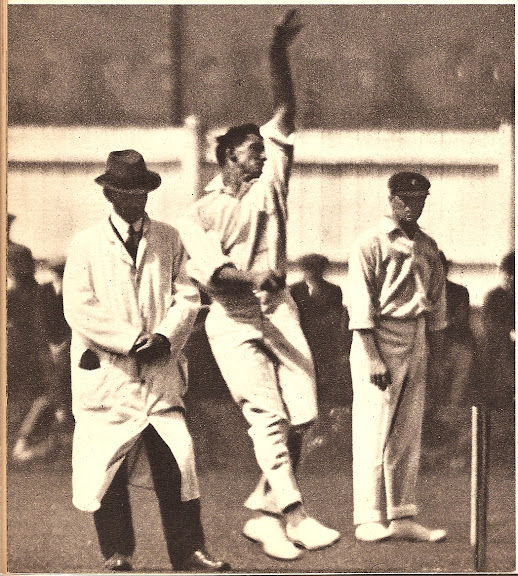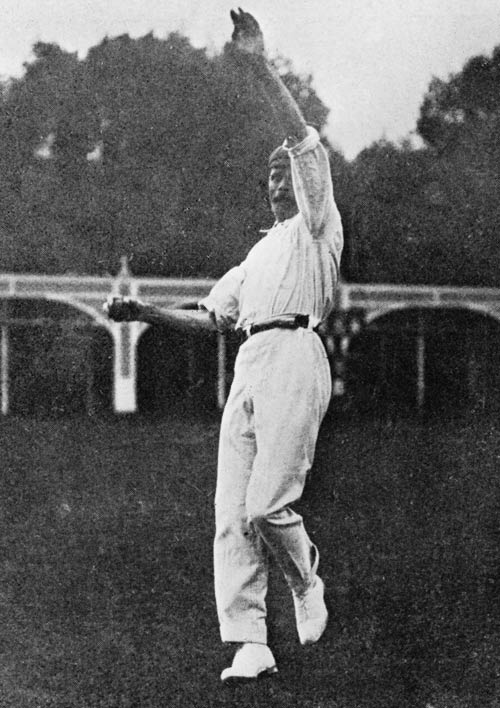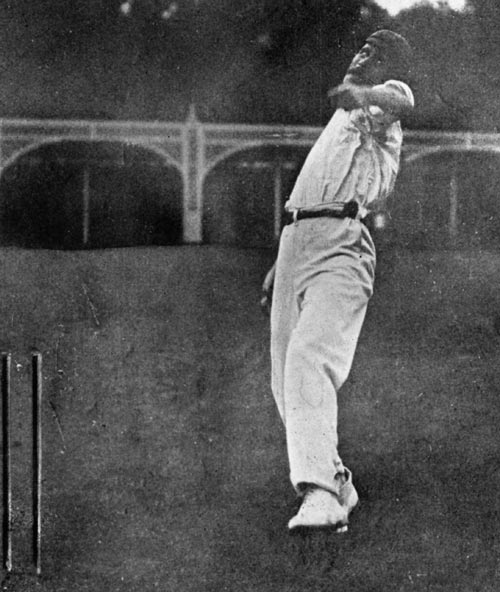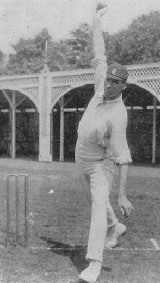SJS
Hall of Fame Member
I may be wrong but I do not recall any/much mention of one of the fastest (if not the fastest) bowler Australia has ever produced. Ernie Jones too has a solid claim in that short list of the fastest bowlers of all time.
CB Fry, that marvelous cricketer and one of the greatest all round sportsmen the world has ever seen writes in detail about this great bowler. Fry, a bum chum of Ranji. also puts to rest the widely held vies that Ranji regarded Jones as someone who has an ilegal action. According to Fry he was just alluding to his great pace when he called him "that chucker".
Jones, according to Fry was.....
Fascinating stuff. His remarks on Larwood's pace are very interesting as are the one's about batsmen of that era having no concept of the leg break of the late thirties (Grimmett, Orielly, Mailey etc)
CB Fry, that marvelous cricketer and one of the greatest all round sportsmen the world has ever seen writes in detail about this great bowler. Fry, a bum chum of Ranji. also puts to rest the widely held vies that Ranji regarded Jones as someone who has an ilegal action. According to Fry he was just alluding to his great pace when he called him "that chucker".
Jones, according to Fry was.....
"the best genuinely fast bowler Australia has ever had (who) was uncomfortably fast, so that when one got to the other end one felt inclined to let loose the painter against the drivable medium pacers. Hence Jones often deserved the wickets which were credited to someone else."
"...the distinctive factor in Australia's victory, as well as in the drawn matches, was the bowling of Ernest Jones. It was an era of Fast bowling, when the critical phase for the professed batsman was to escape an accident early in his innings from the fast bowler. This although all the medium fast bowling was of very high standards. Before the first Test match I said to Ranji that we should have trouble with the Australian bowling. Look at the magnificient medium pace bowlers (lively medium that is) - Hugh Trumble, Monty Noble and W Howell. All of them quite in the first standard. I added that I regarded Noble as quiyte the best of his kind I had ever played against. "Yes," said Ranji,"but the man we have to fear is that chucker." This reference to Ernest Jones does not mean that Ranji thought that Jones's action was unfair, but (just) that his pace was dangerous. As Ranji was a master craftsman in dealing with very fast bowling even on fiery wickets, his judgement of the situation is interesting. If he did not fear fast bowling for himself, he feared it for others.
"On the history of the series of Test Matches he was abundantly right. Jones did the damage, yet all the batsmen who played for England that year were strong players of fast bowling. Here in parenthesis I may remark that with the exception of Larwood, modern generation of batsmen have never seen anything like the fast bowling as this term was exemplified by E. Jones, Lockwood, Richardson, C.J. Kortright, Mold, S.M.J.Woods, J. Sharpe and one or two others of that era. Just as the batsmen of those days had no conception of leg break bowling as it is known now.
"Day in and day out Jones was the fastest of the fast but not faster than Kortright on his day. In the first Test match played at Nottingham that year the wicket was of perfect Nottingham Marl, just as good as nowadays. I made 50 in the first innings and was batting for an hour in the second, and I saw plenty of Jones's bowling. I never appeared a ball from him which appeared to be short, and never one much more than waist high. Yet when I went to look at the wicket at lunch-time on the first day the marks he had made with the ball were perfectly distinct and his usual length had been just about half way down the pitch ! I was fond of hooking the short ball but I did not get a single ball from him which I could hook. The simple fact was that Jones, with his pace, could pitch the ball half way down the pitch and still the ball was good length."
"...the distinctive factor in Australia's victory, as well as in the drawn matches, was the bowling of Ernest Jones. It was an era of Fast bowling, when the critical phase for the professed batsman was to escape an accident early in his innings from the fast bowler. This although all the medium fast bowling was of very high standards. Before the first Test match I said to Ranji that we should have trouble with the Australian bowling. Look at the magnificient medium pace bowlers (lively medium that is) - Hugh Trumble, Monty Noble and W Howell. All of them quite in the first standard. I added that I regarded Noble as quiyte the best of his kind I had ever played against. "Yes," said Ranji,"but the man we have to fear is that chucker." This reference to Ernest Jones does not mean that Ranji thought that Jones's action was unfair, but (just) that his pace was dangerous. As Ranji was a master craftsman in dealing with very fast bowling even on fiery wickets, his judgement of the situation is interesting. If he did not fear fast bowling for himself, he feared it for others.
"On the history of the series of Test Matches he was abundantly right. Jones did the damage, yet all the batsmen who played for England that year were strong players of fast bowling. Here in parenthesis I may remark that with the exception of Larwood, modern generation of batsmen have never seen anything like the fast bowling as this term was exemplified by E. Jones, Lockwood, Richardson, C.J. Kortright, Mold, S.M.J.Woods, J. Sharpe and one or two others of that era. Just as the batsmen of those days had no conception of leg break bowling as it is known now.
"Day in and day out Jones was the fastest of the fast but not faster than Kortright on his day. In the first Test match played at Nottingham that year the wicket was of perfect Nottingham Marl, just as good as nowadays. I made 50 in the first innings and was batting for an hour in the second, and I saw plenty of Jones's bowling. I never appeared a ball from him which appeared to be short, and never one much more than waist high. Yet when I went to look at the wicket at lunch-time on the first day the marks he had made with the ball were perfectly distinct and his usual length had been just about half way down the pitch ! I was fond of hooking the short ball but I did not get a single ball from him which I could hook. The simple fact was that Jones, with his pace, could pitch the ball half way down the pitch and still the ball was good length."
C.B. Fry in "Life Worth Living" (First Published in 1939)







